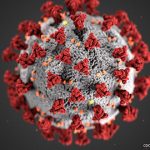- 99424—Principal care management services, for a single, high-risk disease with the following required elements:
- One complex chronic condition expected to last at least three months that places the patient at significant risk of hospitalization, acute exacerbation or decompensation, functional decline or death;
- The condition requires development, monitoring or revision of the disease-specific care plan;
- The condition requires frequent adjustments in the medication regimen, or the management of the condition is unusually complex due to comorbidities; and
- Ongoing communication and care coordination between relevant clinicians providing care.
- +99425—Each additional 30 minutes provided personally by a physician or other qualified health care professional, per calendar month (list separately in addition to code for primary procedure).
Codes 99426 and 99427 are for services provided by clinical staff under the direction of a physician or QHP.
- 99426—Principal care management services, for a single high-risk disease with the same required elements as code 99424. First 30 minutes of clinical staff time directed by a physician or other qualified health care professional, per calendar month.
- +99427—Each additional 30 minutes of clinical staff time directed by a physician or other qualified healthcare professional, per calendar month (list separately in addition to code for primary procedure).
Note: Use 99425 in conjunction with 99424, and use 99427 in conjunction with 99426. Principal care management services of less than 30 minutes in a calendar month are not reported separately.
Split/Shared Visits
2022 is a transitional year for split/shared visits performed with an E/M service. Currently, E/M services may be billed only as shared or split services when provided in a facility setting. Prior to 2022, they could be provided in an office setting if they also met the requirements for incident-to billing. The CMS no longer allows shared services in an office setting, although incident-to services are still allowed and the billing criteria should be followed for established patients.
Telehealth Modifiers
Beginning Jan. 1, Anthem and UnitedHealthcare (UHC) aligned their billing requirements for commercial and Medicare Advantage plans to use the new place-of-service (POS) code 10 for telehealth provided in the patient’s home. POS code 02 should continue to be used when telehealth is provided anywhere other than a patient’s home (e.g., a hospital, skilled nursing facility). The modifier code descriptors are defined as:
- POS 02: Telehealth Provided Other Than in Patient’s Home—The location where health services and health-related services are provided or received, through telecommunication technology. Patient is not located in their home when receiving health services or health-related services through telecommunication technology.
- POS 10: Telehealth Provided in Patient’s Home—The location where health services and health-related services are provided or received through telecommunication technology. The patient is located in their home (which is a location other than a hospital or other facility where the patient receives care in a private residence) when receiving health services or health-related services through telecommunication technology.
Keep in mind, during the COVID-19 public health emergency (PHE), traditional Medicare will continue to require physicians to bill using the POS code they would have used if the service had been provided in person. After the PHE, the CMS will revert to the geographic/originating site requirements for most telehealth services.


